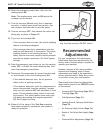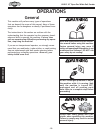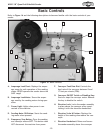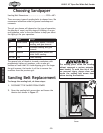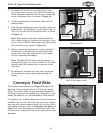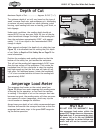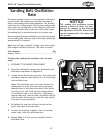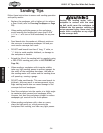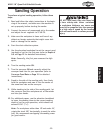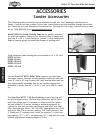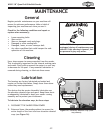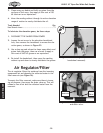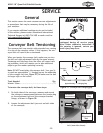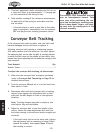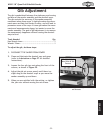
-24-
N(/(*(/Fg\e<e[N`[\9\ckJXe[\i
FG<I8K@FEJ
JXe[`e^K`gj
Follow these instructions to ensure safe sanding operation
and quality results:
• Replace the sandpaper with a higher grit to achieve
a finer finish (refer to :_ffj`e^JXe[gXg\i on GX^\
)').
• When making multiple passes on the workpiece,
avoid lowering the sanding belt more than 0.016"
(
1
⁄64" or
2
⁄3 of a turn of the handwheel) for any one
pass.
• Feed boards into the sander at different points on
the conveyor to maximize sandpaper life and pre-
vent uneven conveyor belt wear.
• DO NOT sand boards less than 6" long, 2" wide, or
1
⁄4" thick to avoid possible kickback, or damage to
the workpiece or sander.
• Extend the life of the sanding belt by regularly using
a PRO-STICK
©
sanding pad (refer to 8::<JJFI@<J on
GX^\)-).
• When sanding a workpiece with irregular widths,
take very light sanding passes to prevent gouges. As
the width of the workpiece decreases, the load on
the sanding motor will reduce and the sanding drum
will speed up, causing a gouge.
• DO NOT edge sand boards. This can cause boards to
kickback, and may result in serious personal injury.
Edge sanding boards also can cause damage to the
conveyor belt and sandpaper.
• Feed the workpiece into the sander at a slight angle
to maximize stock removal and sandpaper effec-
tiveness, but feed the workpiece straight to reduce
sandpaper grit scratch for the finish passes.
• When sanding workpieces with a bow or crown,
place the high point up, which prevents the
workpiece from rocking, and take very light passes.
Starting the sanding motor with a
workpiece in contact with the sand-
ing belt could cause the workpiece to
kickback into the operator resulting in
serious personal injury. Never start the
sander with a workpiece or any object
on the conveyor belt.




